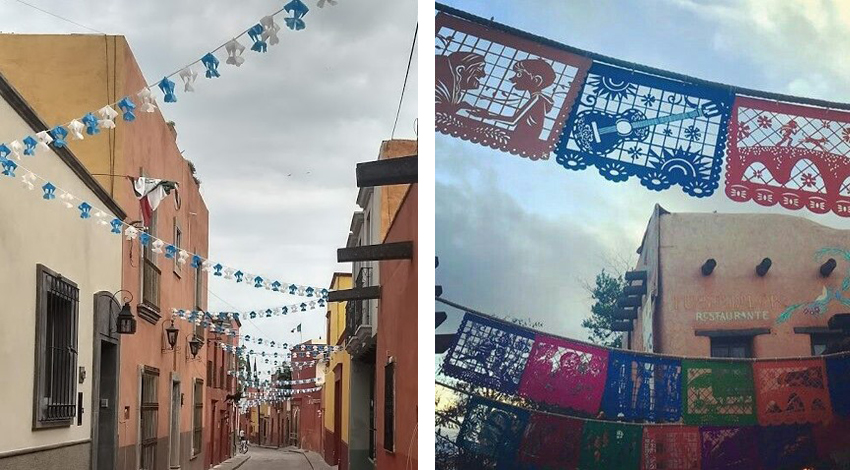
by Joseph Toone
Crisscrossing the streets of town are the brightly colored paper flags that identify a variety of fiestas. The flags are a tradition with deep roots and with a bit of color knowledge you’ll know exactly what is being celebrated.
In the movie Coco these flags are featured in the opening sequence. There they are used to tell the backstory of Miguel’s family and why music is shunned. It’s a stunning introduction to the flags’ importance in Mexican culture.
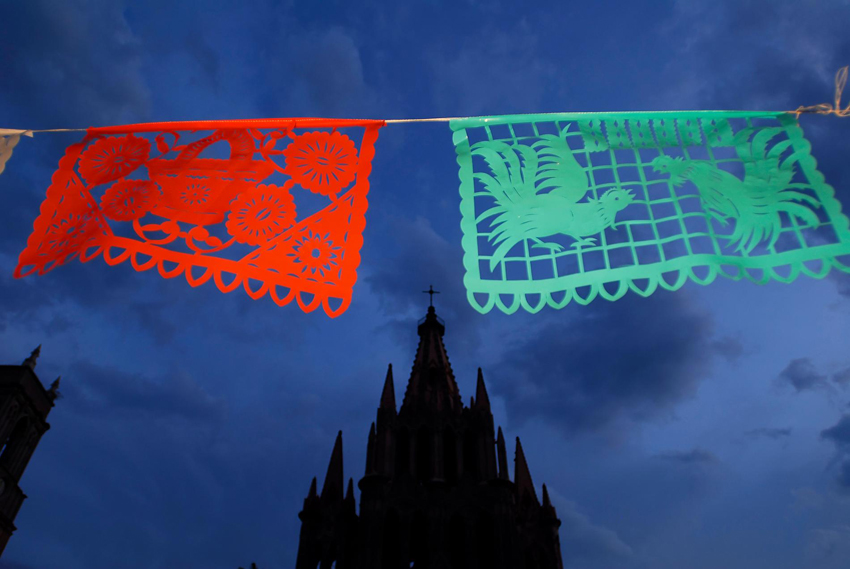
The use of paper for decorating religious festivities can be traced back to pre-Hispanic Mexico. The Aztecs used the bark of mulberry and wild fig trees to make a rough paper for flags and banners to decorate temples, streets, and homes for faith-based events.
After the Spanish Conquest papel de china (tissue paper, or literally, paper from China) arrived in galleons from the Philippines to Acapulco wrapped around porcelain to protect it during the long journey. This thin paper quickly became the favored material for Catholic holiday flag decorations. On the street of Baranca factories made the cut paper flags during the Colonial Era. It was called papel picado, or pecked paper.
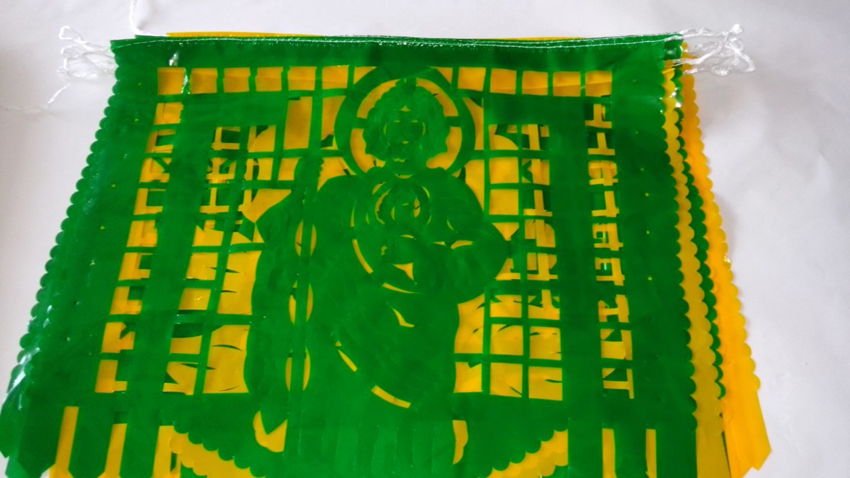
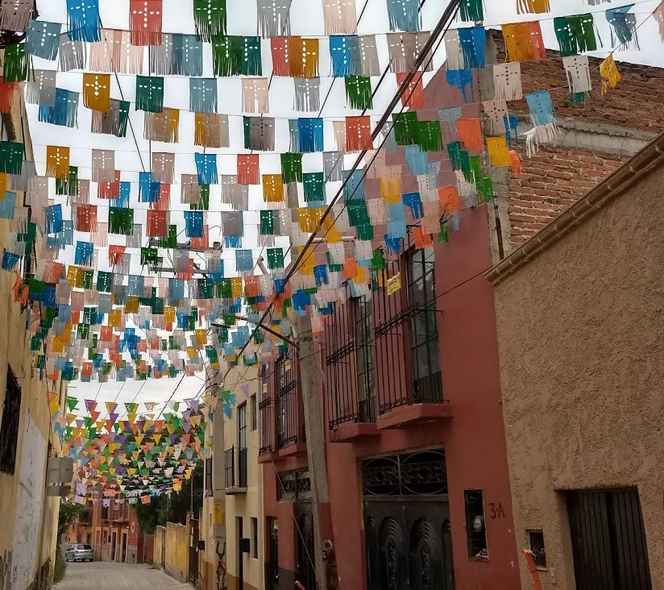
The handmade tissue stacked 40 to 50 layers deep, was and sometimes still is, laid on a lead base. Various sized chisels were used to peck out the design. The paper was glued, at the top, to a long string. Because tissue paper's delicate consistency tends to make it ephemeral in nature the papel picado was used on Day of the Dead altars to remind us of the paper thin line between being living or dead. Handmade flags are considered a Mexican folk art though cut-outs made from plastic are fast gaining favor nowadays, frequently imported, once again, from China.
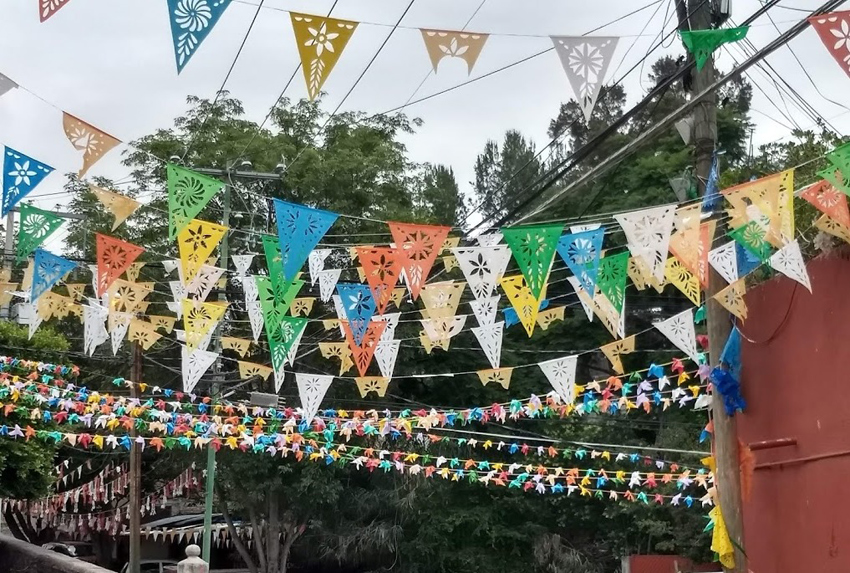
I’ve a danzon partner, Dona Gouda, that frequently dresses with the colors representing the particular day. It is a game for her to try to stump me. For example, she is wearing green and yellow and I need to know it is the 28th of the month dedicated to St. Jude, the patron of lost causes and a lad seen in art in those colors.
Colors with papel picado also indicate the celebration, for example:
- Red, white and green with the faces of war heroes indicate the Mexican flag and Independence Day in mid-September.
- Red, white and green with a Virgin indicate the feast day of Guadalupe, December 12th.
- Red, green, silver and gold with Baby Jesus, the nativity, angels and bells indicate Christmas.
- Multicolored flags during Day of the Dead with skulls, skeletons and Catrinas are used to mark off an altar only for the intended and not some less savory spirits.
- White flags during Day of the Dead indicate a deceased child who needs his or her guardian angel to help guide them to their altars.
- Purple and orange frequent Day of the Dead as purple was the Church’s color for mourning and for the indigenous it was orange.
- Pink and blue are Mary of Three Hail Mary’s signature colors representing angels and where we get the colors for children’s nurseries.
- Yellow and green is tricky. It could be one of the three celebrations each year for St. Joseph (two feast days and the day he died) or the 28th of every month for St. Jude, patron of lost causes. Both lads look lovely in green and yellow.
- Blue and white are for Our Lady of Loreto celebrated in early September on her namesake street.
- Purple and White with crucifixion scenes litter our landscape at Holy Week and Easter.
- Red is normally reserved for the sacred heart of Jesus, Mary and/or Joseph throughout the year.
- Red and white are for St. Michael, the town’s namesake, celebrated in late September.
- Countless designs and colors are for weddings, anniversaries, and birthdays. At a Quinceañera the birthday gal’s dress color will frequently match her fiesta’s flags.
Whatever the occasion, papel picado, or the paper flags, invariably transmit the mirthful message: ¡Viva la Fiesta! ¡Viva Mexico!

**************

Joseph Toone is Amazon's bestselling author of the San Miguel de Allende Secrets series of books and TripAdvisor's best rated historical walking tour guide. For more information contact toone.joseph@yahoo.com or visit History and Culture Walking Tours or JosephTooneTours.com, also on FaceBook.
You must register and log in to write a comment.
Please use the "login" link at the top (right) of the page.
|